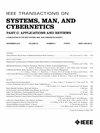犯罪分子空间选址决策模型:执法决策支持的基础
IEEE Transactions on Systems Man and Cybernetics Part C-Applications and Re
Pub Date : 2003-02-01
DOI:10.1109/TSMCC.2003.809867
引用次数: 43
摘要
犯罪分析使用过去的犯罪数据来预测未来的犯罪地点和时间。通常,这种分析依赖于热点模型,该模型显示了基于这些事件过去位置的犯罪事件集群。它没有考虑罪犯的决策过程是人类发起的事件,容易使用空间选择模型进行分析。本文将犯罪事件作为空间选择过程进行分析。空间选择分析可以发现人们的行为在空间和时间上的分布。提出了包括决策过程模型在内的两种调整后的空间选择模型。对比结果表明,调整后的空间选择模型能够有效、准确地预测未来的犯罪模式,可作为执法决策支持系统的基础。本文还扩展了空间选择模型,以包括决策者的偏好间接通过事件报告而不是直接通过调查工具得出的一类问题。本文章由计算机程序翻译,如有差异,请以英文原文为准。
A decision model for spatial site selection by criminals: a foundation for law enforcement decision support
Crime analysis uses past crime data to predict future crime locations and times. Typically this analysis relies on hot spot models that show clusters of criminal events based on past locations of these events. It does not consider the decision making processes of criminals as human initiated events susceptible to analysis using spatial choice models. This paper analyzes criminal incidents as spatial choice processes. Spatial choice analysis can be used to discover the distribution of people's behaviors in space and time. Two adjusted spatial choice models that include models of decision making processes are presented. The comparison results show that adjusted spatial choice models provide efficient and accurate predictions of future crime patterns and can be used as the basis for a law enforcement decision support system. This paper also extends spatial choice modeling to include the class of problems where the decision makers' preferences are derived indirectly through incident reports rather than directly through survey instruments.
求助全文
通过发布文献求助,成功后即可免费获取论文全文。
去求助
来源期刊
自引率
0.00%
发文量
1
审稿时长
3 months

 求助内容:
求助内容: 应助结果提醒方式:
应助结果提醒方式:


